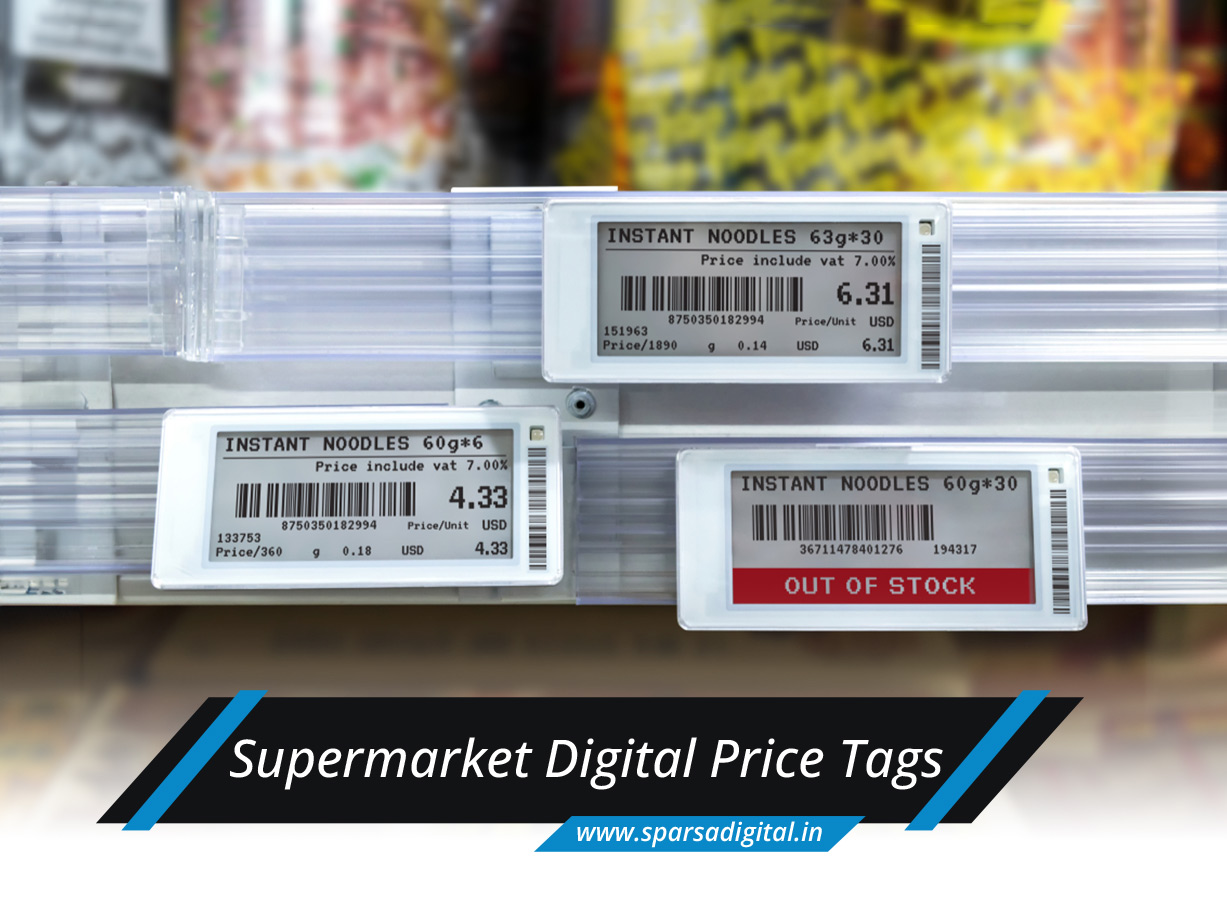In today’s fast-paced world, technological advancements have revolutionized various industries, and the retail sector is no exception. Supermarkets, the cornerstone of consumer shopping, have embraced innovative solutions to provide enhanced experiences for shoppers. One such innovation that has gained traction in recent years is the implementation of digital price tags. In this article, we will explore the concept of supermarket digital price tags, their benefits, and the transformative impact they have on the retail landscape.
Understanding Supermarket Digital Price Tags
Traditional paper price tags have long been a staple of retail stores, requiring manual updates and often leading to inaccuracies. Supermarket digital price tags, on the other hand, are electronic displays that replace traditional paper tags with dynamic, real-time pricing information. These digital price tags are typically connected wirelessly to a central system, enabling instantaneous updates and ensuring consistency across the store.
A. Components and Technology
- Digital price tags consist of electronic ink (e-ink) displays that mimic the appearance of printed paper. These displays are energy-efficient and easy to read from various angles. Wireless communication technologies, such as Bluetooth or Wi-Fi, facilitate seamless connectivity between the tags and the central management system.
B. Real-Time Updates
- Unlike traditional paper tags, digital price tags enable real-time price updates. Retailers can modify prices remotely, reflecting changes instantly throughout the store. This agility allows supermarkets to respond promptly to market dynamics, promotions, and inventory changes.
Benefits of Supermarket Digital Price Tags
A. Enhanced Pricing Strategies
- The dynamic nature of digital price tags empowers retailers to implement versatile pricing strategies. Special promotions, time-sensitive discounts, and personalized offers can be executed seamlessly. This flexibility enables supermarkets to attract and retain customers effectively.
B. Improved Operational Efficiency
- Digital price tags eliminate the need for manual price updates, reducing labor costs and minimizing human errors. Staff members can focus on customer service and other value-added tasks, enhancing overall operational efficiency.
C. Enhanced Customer Experience
- Shoppers benefit from clear, up-to-date pricing information that aids informed purchasing decisions. Moreover, digital price tags facilitate consistent pricing across different channels, such as online and in-store, ensuring a unified shopping experience.
D. Sustainability and Waste Reduction
- By eliminating the constant need for paper tags, supermarkets contribute to environmental sustainability. Digital price tags significantly reduce paper waste, aligning with modern eco-friendly practices.
Implementation Challenges and Considerations
A. Initial Investment
- Transitioning to digital price tags involves an upfront investment in hardware, software, and infrastructure. However, the long-term benefits in terms of operational efficiency and customer satisfaction often outweigh the initial costs.
B. Data Security and Management
- Ensuring the security of pricing data and preventing unauthorized access is crucial. Robust cybersecurity measures must be in place to safeguard sensitive information.
C. Staff Training and Change Management
- Introducing new technology requires proper training for employees to effectively operate and manage digital price tags. Change management strategies help staff adapt to the shift from traditional methods.
Real-World Examples
A. Amazon Go Stores
- Amazon Go stores, known for their cashier-less shopping experience, utilize digital price tags to display real-time prices on shelves. The technology seamlessly integrates with the store’s checkout process, providing a frictionless shopping experience.
B. European Retailers
- Many European supermarkets, such as Auchan and Carrefour, have successfully adopted digital price tags. These retailers have reported improved pricing accuracy, reduced operational costs, and enhanced customer engagement.
Understanding Electronic Shelf Labels
Electronic Shelf Labels are digital displays that replace traditional paper labels on retail shelves. These labels utilize electronic ink (e-ink) technology to mimic the appearance of ink on paper, allowing for clear and legible price and product information. ESLs are connected to a central system through wireless communication, enabling real-time updates of pricing and product details.
The Components of ESLs
- E-Ink Display: The heart of ESLs, e-ink displays offer energy efficiency and visibility in various lighting conditions.
- Wireless Connectivity: Bluetooth, Wi-Fi, or other wireless protocols facilitate communication between ESLs and the central management system.
- Central Control: A software interface allows retailers to remotely manage and update pricing, promotions, and product information across the store.
Conclusion
Supermarket digital price tags represent a transformative leap in the retail industry, fostering a dynamic shopping environment that benefits both retailers and customers. The agility to implement real-time pricing updates, personalized promotions, and consistent shopping experiences positions supermarkets at the forefront of technological innovation. While challenges like initial investment and data security must be addressed, the numerous advantages, including improved efficiency, sustainability, and customer satisfaction, underscore the compelling rationale for adopting this technology. As supermarkets continue to evolve, digital price tags are a powerful tool that will shape the future of retail.
Connect with our team of experts today at Sparsa Digital. Begin your journey to more enhanced procedures, while taking advantage of the most productive systems available in the market.

